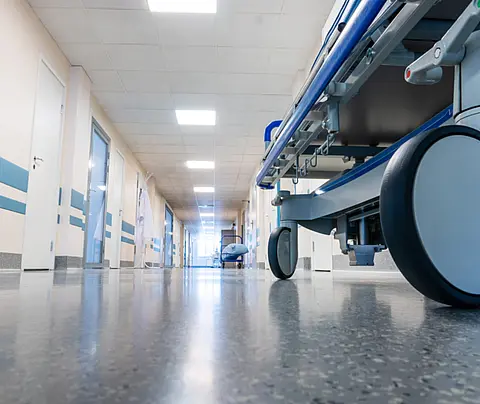RTI’s new hospital-flux simulator will help communities and healthcare systems nationwide better prepare for COVID-19 and future public health emergencies
RESEARCH TRIANGLE PARK, N.C. — A new hospitalization modeling simulator could be used to identify communities at higher risk of increased hospital and ICU bed occupancy rates up to 30 days in advance of COVID-19 case surges across the U.S. The simulator, developed by a team of data scientists at RTI International, a nonprofit research institute, was recently added to the organization’s COVID-19 data insights tool to help bolster community response efforts nationwide.
The new simulator will use epidemiological data to give public health officials and community leaders the ability to recognize early signs of a hospital or healthcare system reaching bed capacity during a potential COVID-19 case surge. This insight will give local leaders the power to make decisions about response efforts based on localized data.
“What we know from the past year is that a high portion of COVID-19 cases require hospitalization or treatment in ICU units,” said Donal Bisanzio, DVM, PhD senior epidemiologist at RTI. “Our hospital-flux simulator aims to recognize the critical role hospitals play in our nationwide response to COVID-19 by making it easier for providers and community leaders to see precisely when their community might be affected in real-time.”
RTI’s hospital-flux simulator combines publicly available data on COVID-19 case rates with community-level factors such as daily case reporting, population demography, community hospitalization rates and epidemic forecasting to project bed occupancy for over 2,600 hospitals nationwide up to 30 days in advance.
Unlike other tools, RTI’s hospital-flux simulator uses RTI SynthPop ™, a synthetic population of every household across the U.S. based on income and demographic data. The tool also uses RTI Merge ™, an AI driven research platform, to monitor and automatically refresh hospital-level data.
“COVID-19 has given us the opportunity to leverage the power of recent advancements in scalable computing and the new RTI Merge platform for the greater good,” said Rainer Hilscher, PhD, research data scientist at RTI. “Our hope is that the new simulator proves to be a benefit for not only COVID-19, but potential future public health emergencies.”
RTI’s COVID-19 data insights tool, which is available online and is free of charge, can be adapted by RTI for other communicable as well as non-communicable diseases across the U.S.
To learn more, please contact news@rti.org.

To request an interview, contact our Media Relations team.
